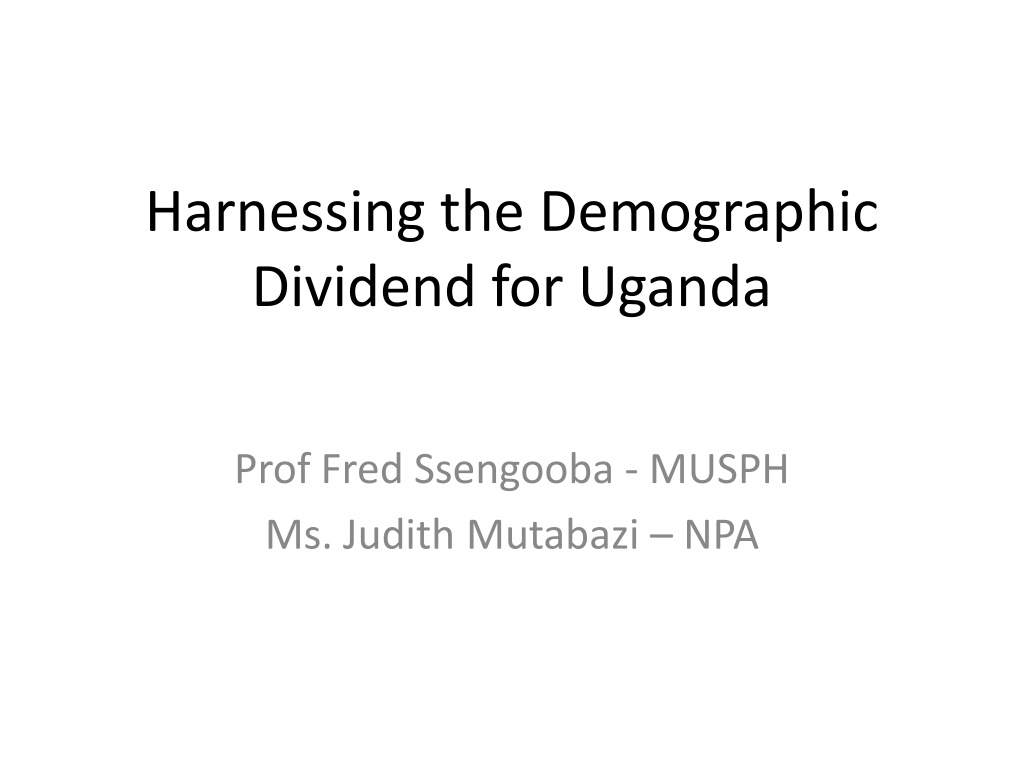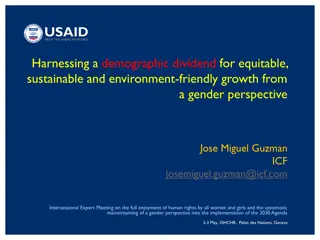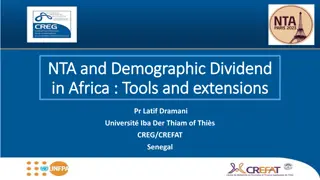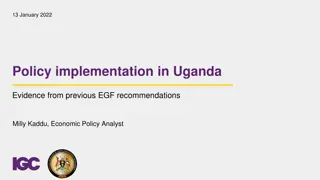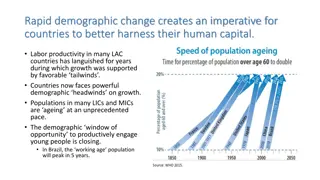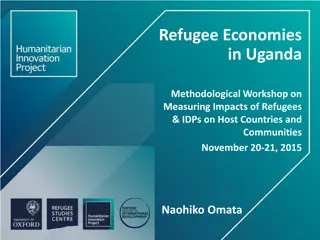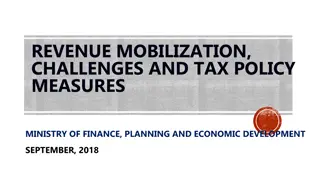Harnessing the Demographic Dividend for Uganda: Policy Brief
Uganda aims to transition into a middle-income country by 2040, facing challenges like high population growth and fertility rates. This policy brief advocates for interventions such as family planning services, health, education, and economic reforms to address these issues and promote sustainable development. Key stakeholders involvement and negotiation strategies are outlined for effective implementation.
Download Presentation

Please find below an Image/Link to download the presentation.
The content on the website is provided AS IS for your information and personal use only. It may not be sold, licensed, or shared on other websites without obtaining consent from the author. Download presentation by click this link. If you encounter any issues during the download, it is possible that the publisher has removed the file from their server.
E N D
Presentation Transcript
Harnessing the Demographic Dividend for Uganda Prof Fred Ssengooba - MUSPH Ms. Judith Mutabazi NPA
Context of the problem & its importance Uganda aspires to become a middle-income country with a par capita income of $9,500, by 2040, the major issue for government to address is the high population growth rate (3.0% annually). Opportunity exist for reducing the high fertility (6.2) that will change the population structure to one with more working age adults than children (52% below 18 years) thus reducing the dependence burden through a multi-sectoral approach.
Statement on why the policy brief argues for the current approach/policy The high fertility rate continues to impact on huge cost of service delivery, high infant and maternal deaths, high unemployment that is not leading to fast economic growth We need quality population than big size not creating demand
Key recommendations for actions Provision of family planning services by focusing on unmet need currently estimated at 32 percent Health reforms promote access, affordable and quality (workforce) in provision of health service delivery for all Education reforms- focus on innovations, skills development, science and technology and entrepreneurship Economic reforms & job creation - Build industrialization from the agricultural base through value addition industries, investing in infrastructure (Energy, transportation and communication) Governance and accountability- this requires strengthening the structures and systems for governance
Identify key stakeholders; and outline strategies for negotiations with them STAKEHOLDERS: MFPED, MOH, MOES, MGLSD, MTI, MAAIF, MEMD, MLHUD, POPSEC, NPA, DEVELOPMENT PARTNERS, CSOs, RELIGIOUS ORGs, ACADEMIA STRATEGIES: Coordination committees roles & responsibilities Develop an action plan Develop monitoring and evaluation indicators Hold monthly review meetings for Core Technical Team to assess implementation progress in sector annual plans Lobby for funds
Economic evidence More working age population increasing productivity and widen tax base Increased family planning services reduces population growth and gender empowerment (no. of children produced) Reduced health budget on maternal, infant mortality and stunting Skilled population able to get employment Industrialization will create jobs leading to socio- economic transformations
General strategies used to communicate/ translate the evidence to policy-makers Quarterly/annual reports Mid term evaluation report on NDPII National population day State of the annual population report Sector working meetings Media
Discuss any other strengths and weaknesses of the policy brief overall (structure (length, clarity), evidence, presentation (photos, size) Strengths: Political will, ICPD resolution (2013) resolution leading to DD report, National population Policy (2003), HSDP (2016-2020), Uganda Vision 2040, SGDs Weakness: Population is a cross cutting issue, so all sectors take responsibility to allocate resources & implement no line ministry other than POPSEC (coordination & advocacy role)
Final decision taken in the national context regarding problem issue raised Integrate population issues in all sector development plans (SDPs) Develop an advocacy plan on demographic dividend Develop costed interventions, targets and indicators in eight priority sectors to monitor implementations
